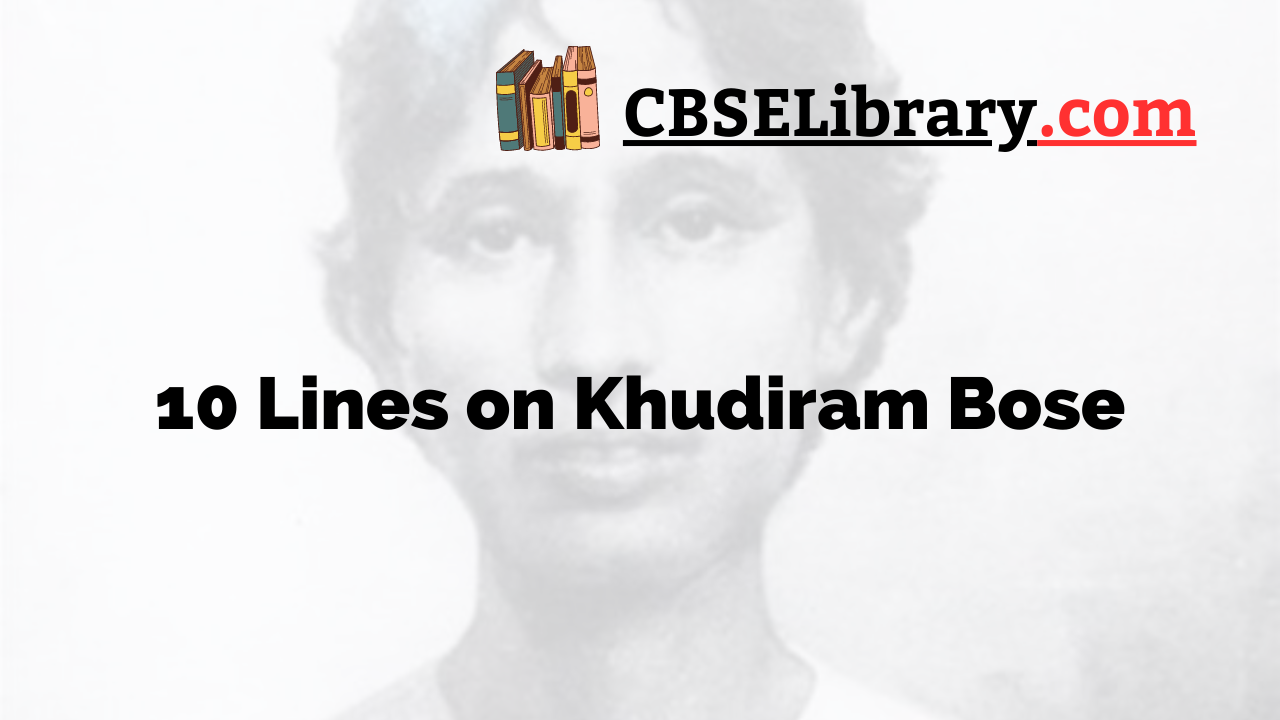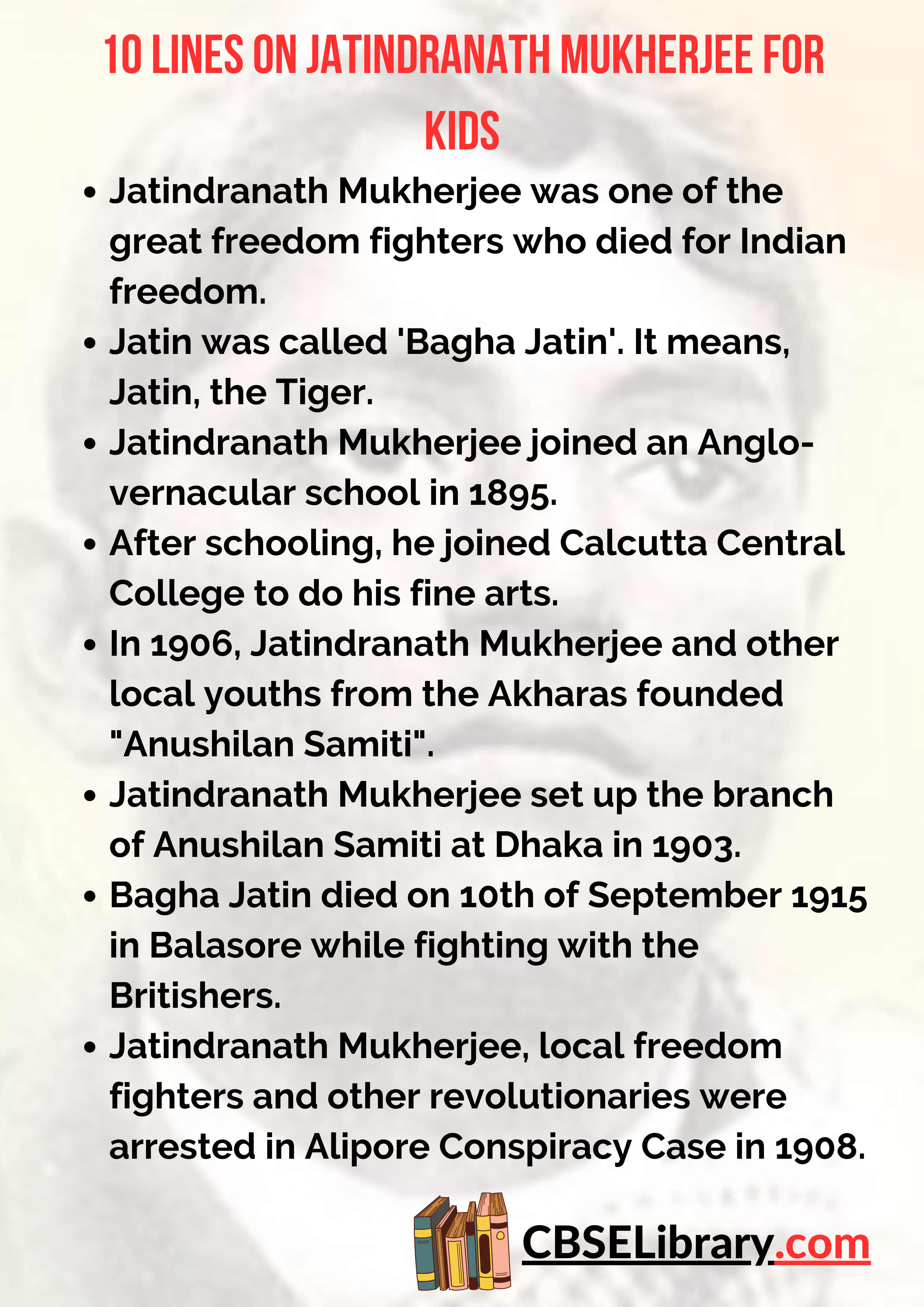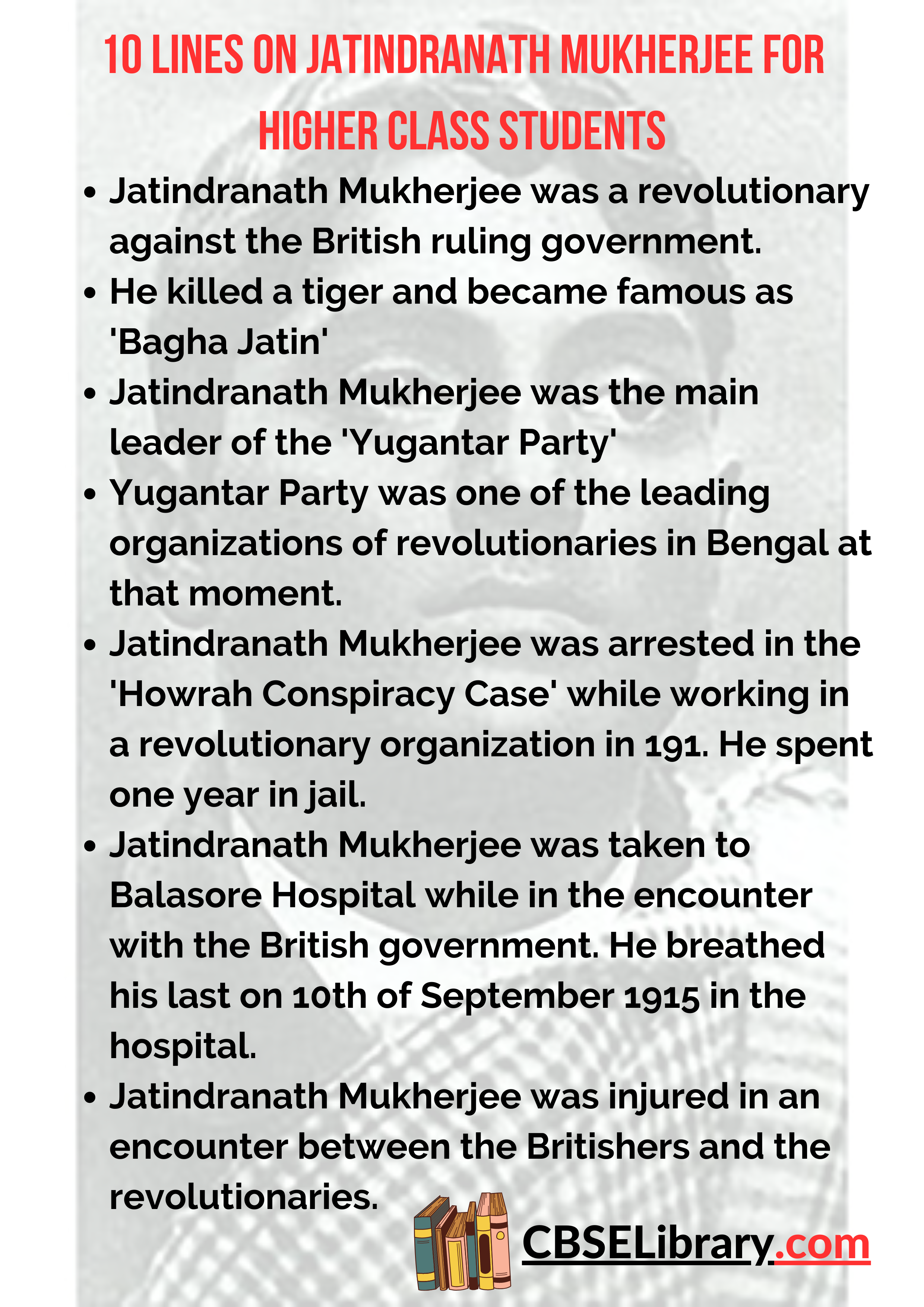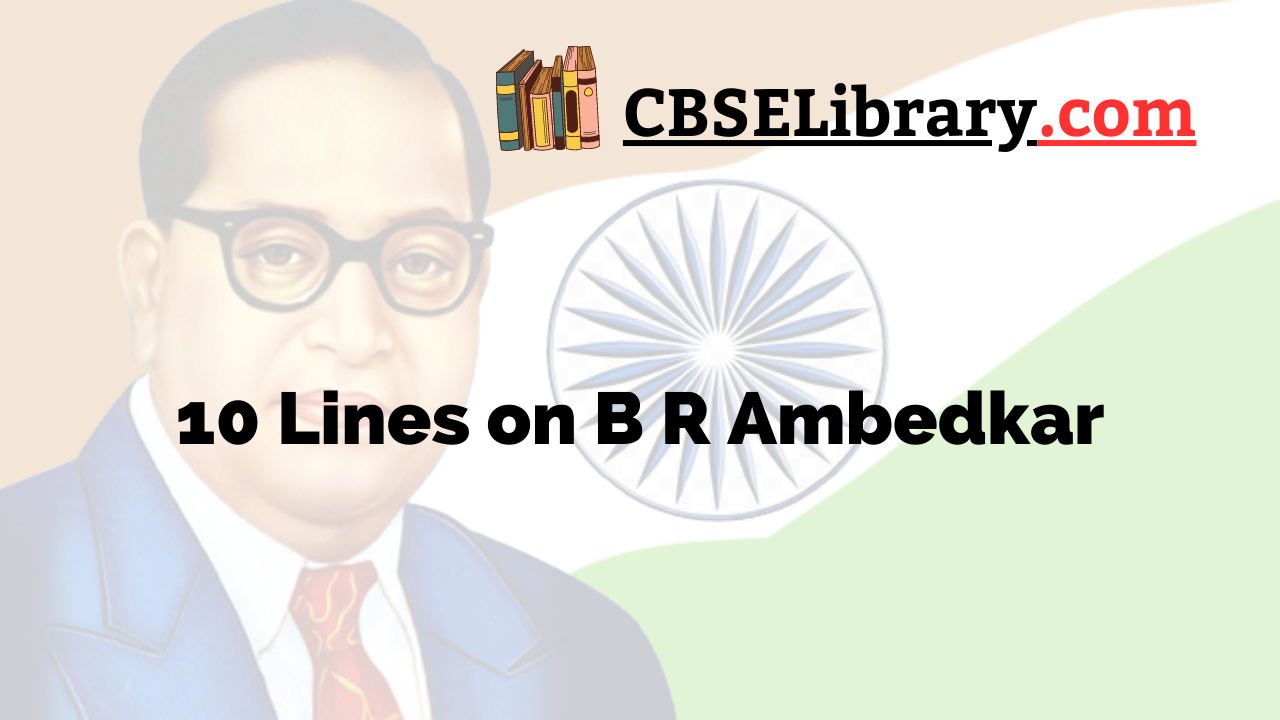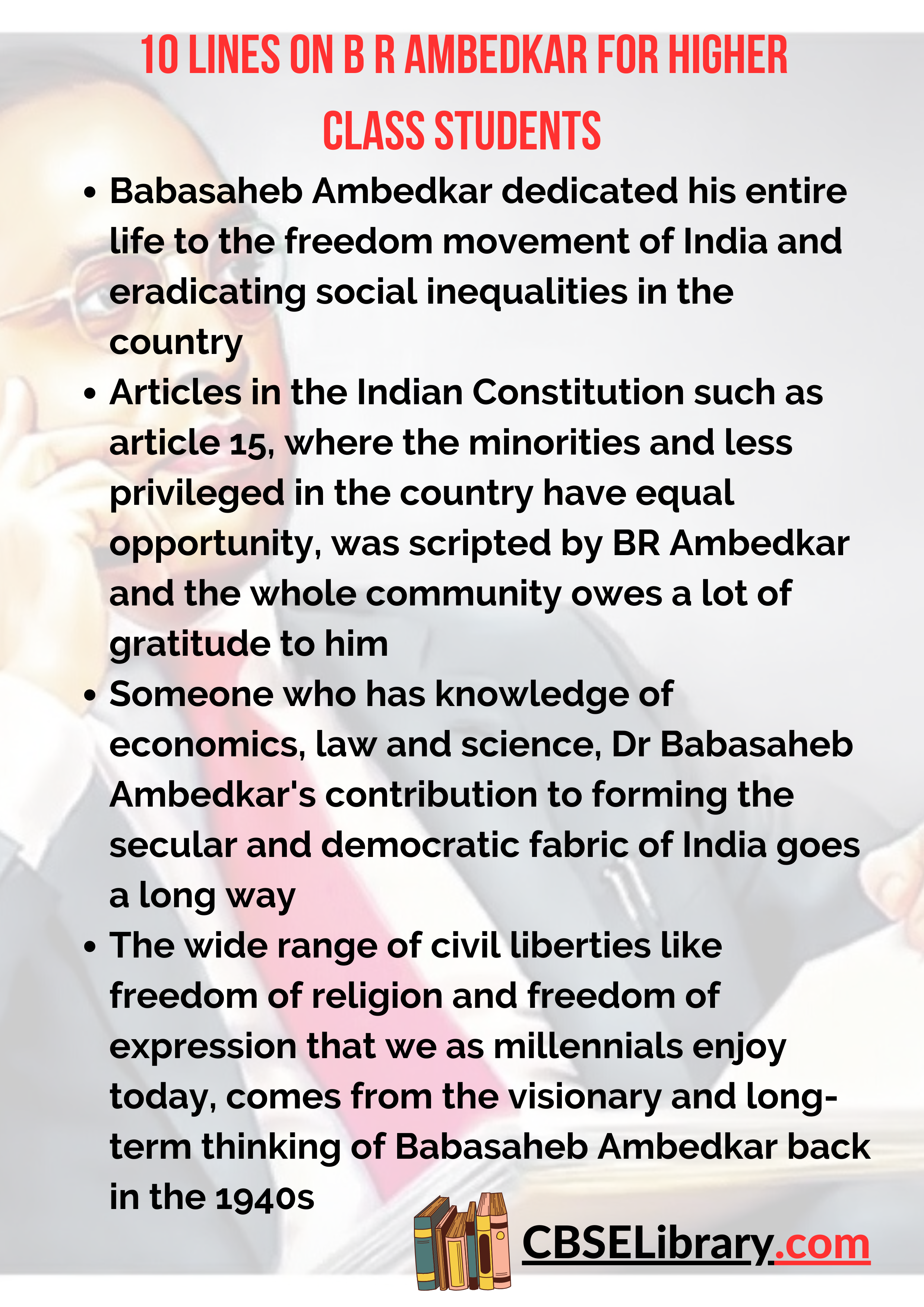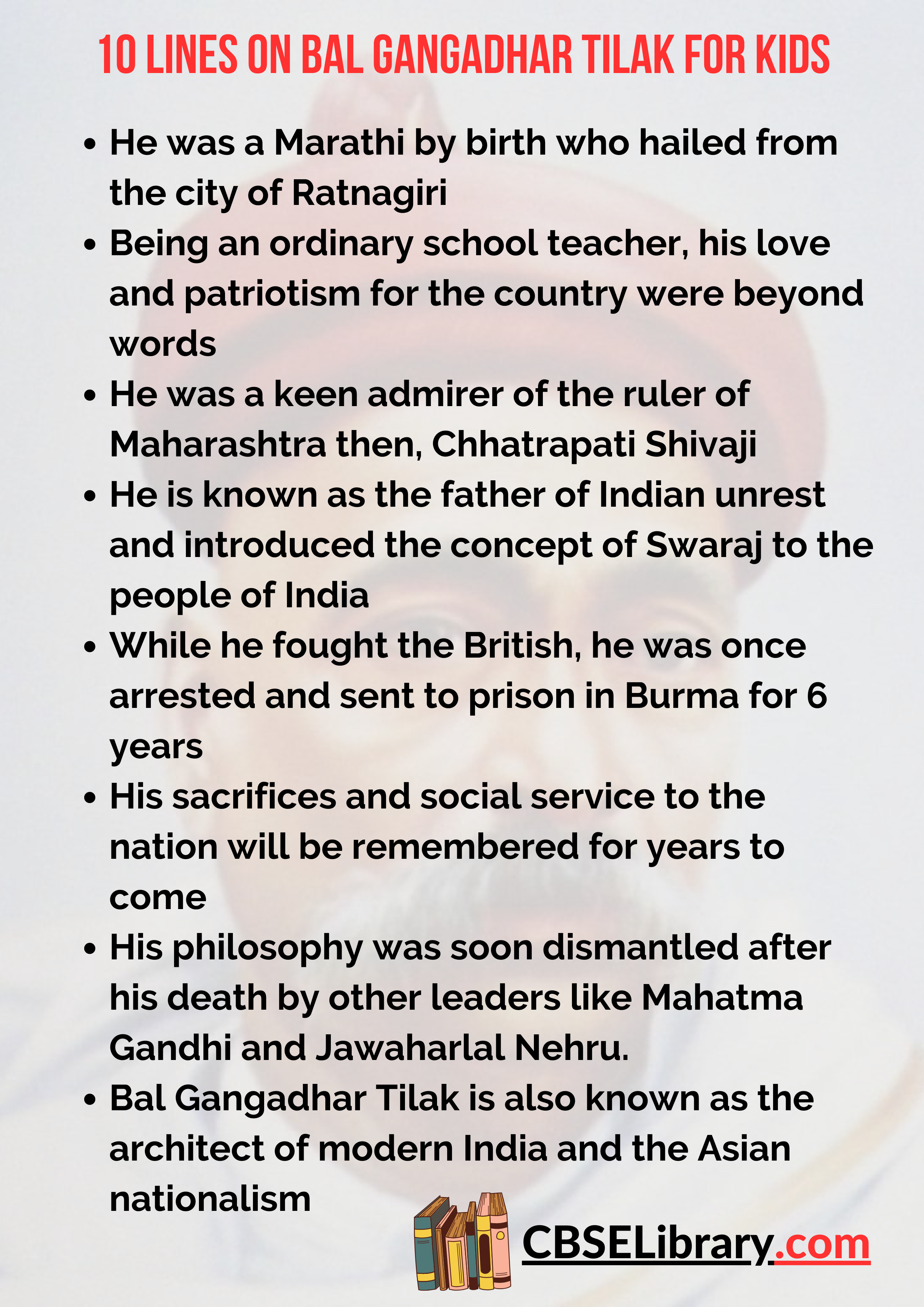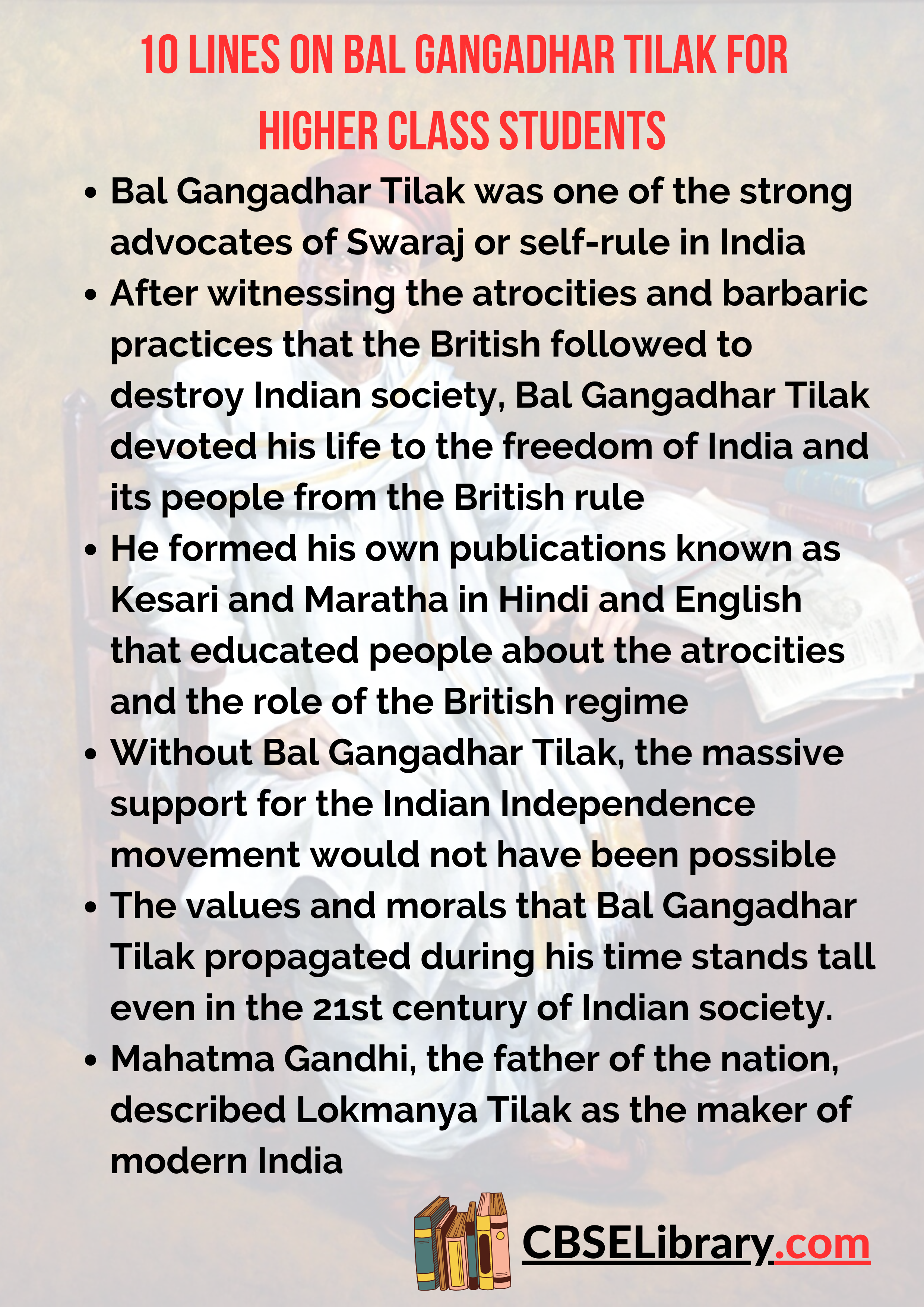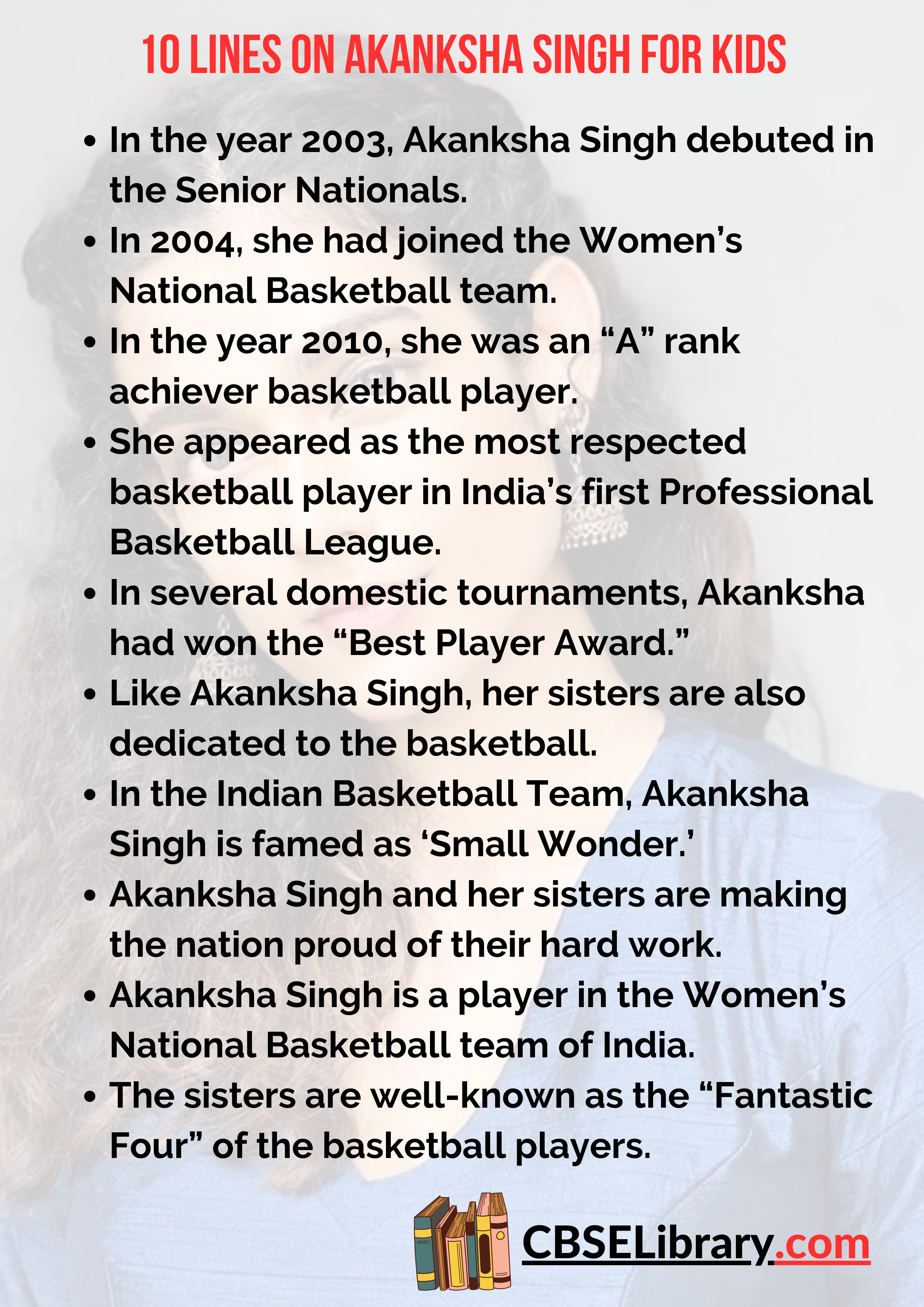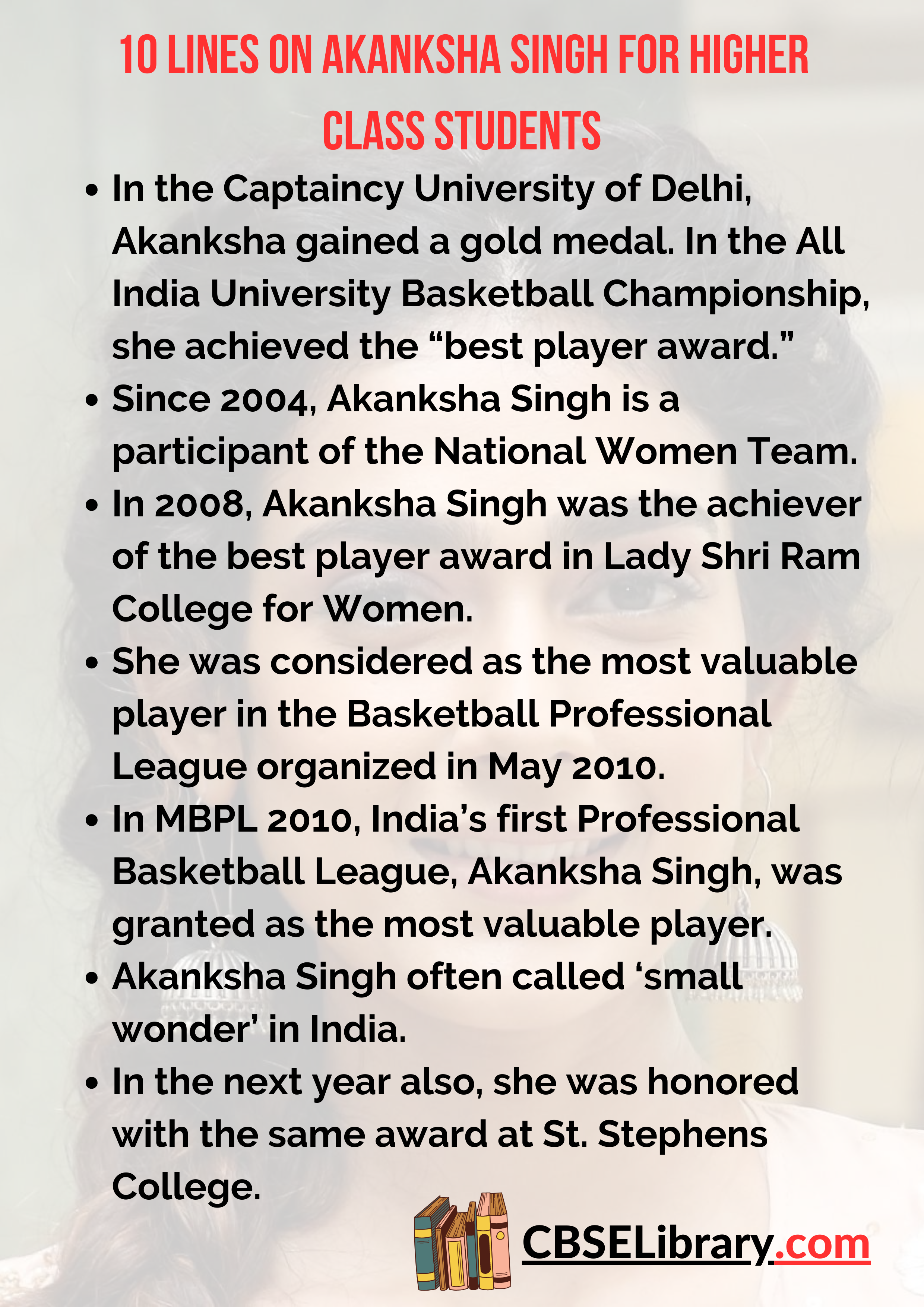10 Lines on Khudiram Bose: Eighteen years, an age when the bloom of youth starts to blossom, opening up a different world for a bewildered person. In any case, we would be able to envision somebody surrendering his life at that age, for his nation’s opportunity, to liberate his homeland from the grasp of the British supreme domain. The forgotten legend named Khudiram Bose.
Born on December 3, 1889, in the little town named Mohobani, in the Medinipur locale of then unified Bengal (present West Bengal), Khudiram was the fourth child in a group of three girls. He lost his mom when he was six years of age, and after a year, his father passed away.
You can read more 10 Lines about articles, events, people, sports, technology many more.
Set 1 – 10 Lines on Khudiram Bose for Kids
Set 1 is helpful for students of Classes 1, 2, 3, 4 and 5.
- In the Indian freedom struggle, Khudiram Bose was a freedom fighter who made a revolution.
- Khudiram Bose counted among the youngest freedom fighters.
- On 3rd December 1889, Khudiram Bose was born at Midnapore district in West Bengal.
- Khudiram Bose met Barindra Kumar Ghosh when he joined ‘Anuhilan Samiti’.
- While distributing pamphlets, Khudiram was captured.
- As a revolutionary activist, he joined ‘Jugantar’ with others.
- To target the police, Bose, left a bomb near the police station.
- Khudiram decided to assassinate chief magistrate Kingsford on 13th April 1908.
- A British lady with her child was killed unfortunately during that incident.
- On 11th August 1908 due to the conflict of bombing, Khudiram Bose died.
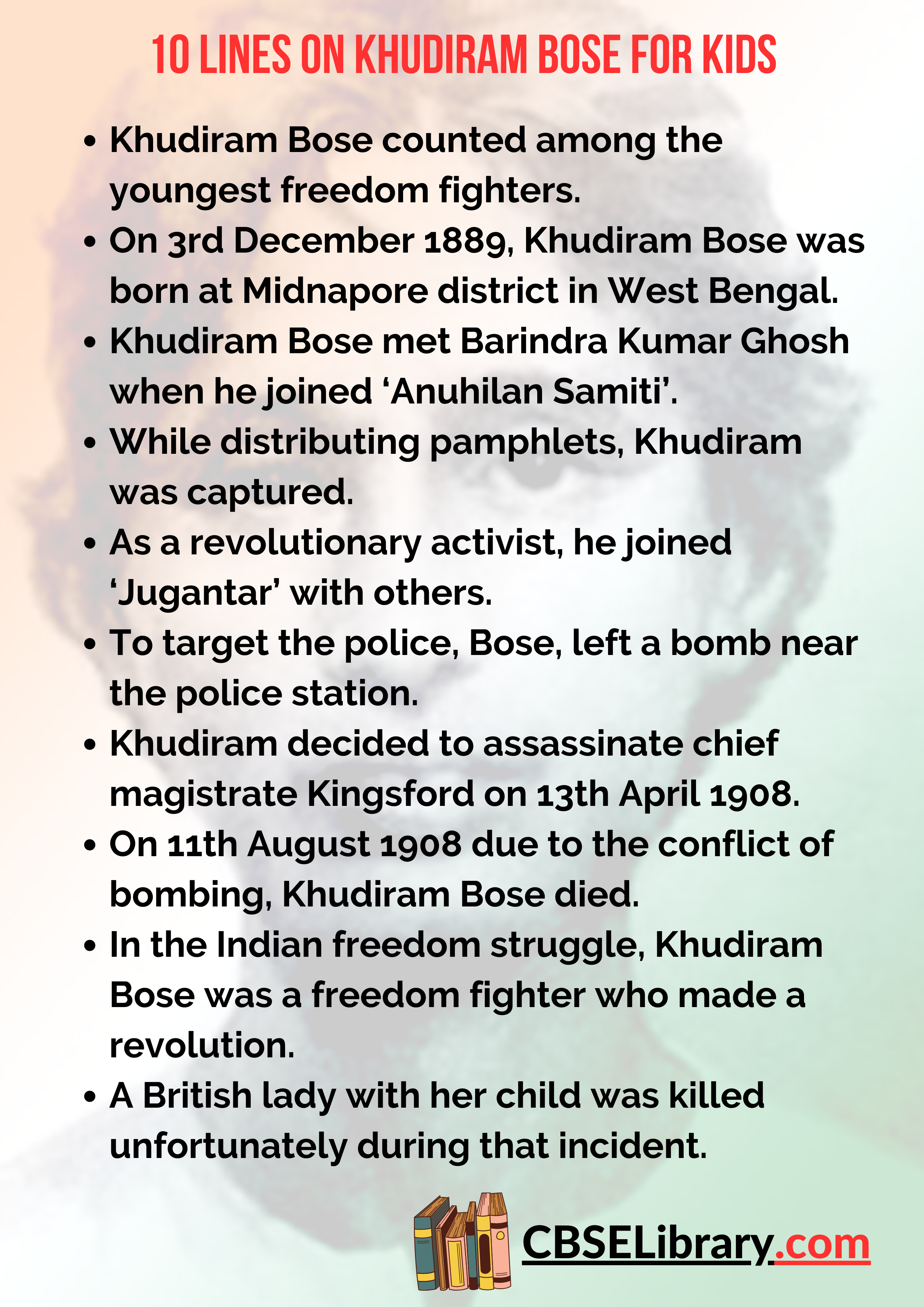
Set 2 – 10 Lines on Khudiram Bose for School Students
Set 2 is helpful for students of Classes 6, 7 and 8.
- Khudiram Bose was one of the revolutionary freedom fighters who passed away while battling struggling for India.
- Khudiram Bose was captured and executed in the wake of confronting the preliminaries of bombings at just 19 years of age.
- Khudiram Bose was born in Habibpur town of Midnapore region, West Bengal, his dad, was ‘Trailokyanath Bose’ and his mom was ‘Lakshmi Priya Devi’.
- When he lost his parents at the age of six years, he was raised at his elder sister’s house.
- Khudiram Bose took affirmation in Tamluk’s Hamilton secondary school; he joined ‘Anushilan Samiti’.
- In 1906, when Khudiram Bose was distributing a magazine called Sonar Bangla, he was taken by British police.
- After discharged from prison, Khudiram engaged with the other revolutionaries to slaughter Kingsford.
- Khudiram Bose with his Colleague Prafulla Chaki went there to Muzaffarpur to execute Kingsford.
- On 30th April 1908, Khudiram Bose murdered a British woman and her kid as a mistake when he wanted to execute Kingsford.
- Khudiram was captured and confronted a severe preliminary and finally was granted with the death penalty, Khudiram was hanged to death on 11th August 1908.
Set 3 – 10 lines on Khudiram Bose for Higher Class Students
Set 3 is helpful for students of Classes 9, 10, 11, 12 and Competitive Exams.
- Khudiram Bose was the most impressive revolutionary at the time of independence struggle.
- On 3rd December 1889 in the family of Triloknath Bose and Lakshmipriya Devi in small-town Habibpur in Tamluk town of Midnapore region of Bengal, Khudiram was born.
- In 1902-03, Khudiram Bose participated in the freedom battle while he was in class IX.
- During that time, Mr. Aurobindo and Sister Nivedita were there to motivate individuals against British law.
- Khudiram and Prafulla Chaki decided to murder judge Kingsford of Calcutta. On 30th April 1908, Khudiram Bose and Prafulla were sitting tight for Kingsford outside the European Club at about 8.30 P.M.
- Khudiram tossed a bomb and terminated at the horse cart in obscurity in which the daughter and the wife of the judge were killed due to which the British government put a prize of 1000 rupees on him.
- On 1st May 1908, at Oyeni he was captured.
- He was condemned to death in the wake of indicting him in the bomb impact. He is likewise called the ‘extraordinary hero of the battle to freedom’.
- In June 1908, he was taken to court and condemned to death on 13th June.
- He was executed by hanging 11th August 1908, at a prime age of 18 years eight months, and eight days.
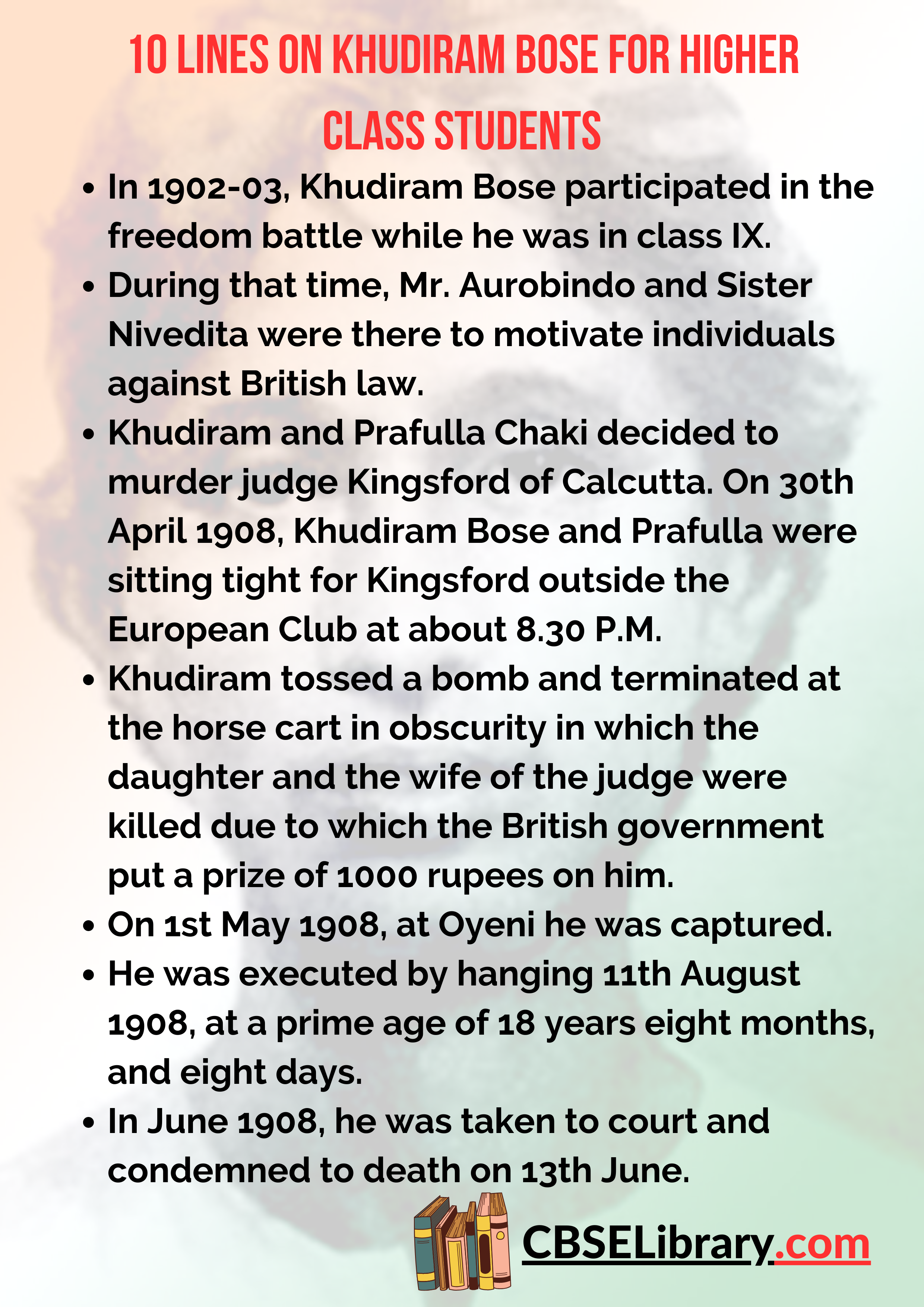
FAQ’s On 10 Lines on Khudiram Bose
Question 1.
At what age was Khudiram Bose hanged to death?
Answer:
At the age of nineteen years, Khudiram Bose was hanged to death.
Question 2.
Where was Khudiram Bose executed?
Answer:
The freedom fighter was incarcerated and executed in the Muzaffarpur Jail which was renamed as Khudiram Bose Memorial Central Jail.
Question 3.
Who was assassinated by Khudiram Bose?
Answer:
Khudiram Bose tried to kill Magistrate Kingsford, but mistakenly he ended up throwing bombs on a different carriage due to which two British women died.
Question 4.
Where is the place of birth of Khudiram Bose?
Answer:
Midnapore district of unified Bengal currently known as West Bengal.
